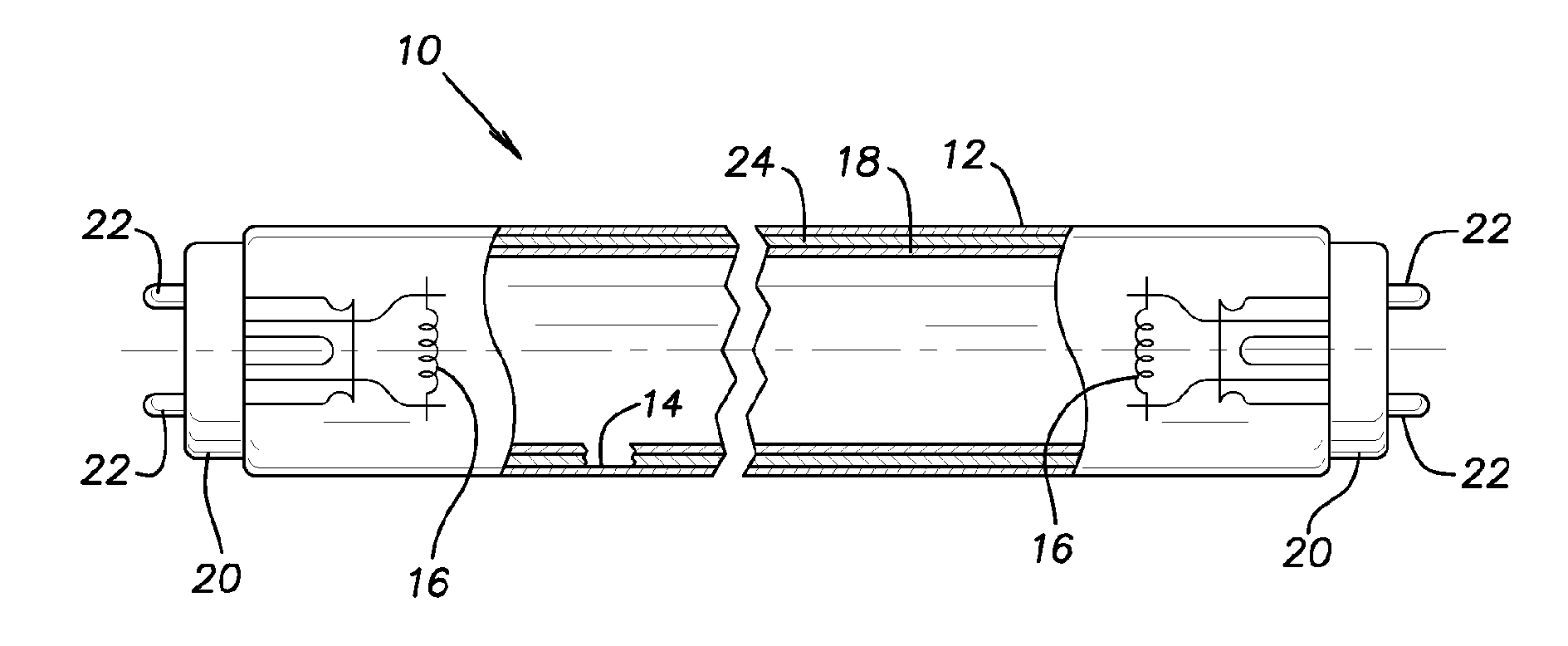Fluorescent lamp with coated phosphor particles
a technology of phosphor particles and fluorescent lamps, which is applied in the direction of discharge tubes/lamp details, discharge tubes luminescent compositions, discharge tubes/lamp details, etc., can solve the problems of reducing the overall efficiency of lamps, reducing the phosphor conversion efficiency and lumen output of lamps over their life cycles, and most of the 185 nm wavelength radiation wasted
- Summary
- Abstract
- Description
- Claims
- Application Information
AI Technical Summary
Benefits of technology
Problems solved by technology
Method used
Image
Examples
example
[0081]Table 2 simulates lamp performance at 100 hour burning. A spreadsheet is used to mathematically sum from a library of spectra to simulate lamp performance. The individual spectra were obtained for unblended one component phosphors for each of red, green and blue and the properties were measured for lamps coated with these phosphors at 100 hours of burning. Phosphor blends were then simulated using the spreadsheet by using proportions of each of the red, green and blue one component blends (spectral percentages) to produce a white blend and estimating the LPW and CRI for lamps using the blend based on the measured LPW and CRI for the lamps that include only one of each component. This gives reasonable estimates of the spectra and the LPW. The CRI values shown for R1-14 are calculated from the spectra with standardized formulas described above. To make phosphor compositions from the blends and their spectral percentages, one would start out with blends using the spectral % of ea...
PUM
 Login to View More
Login to View More Abstract
Description
Claims
Application Information
 Login to View More
Login to View More - R&D
- Intellectual Property
- Life Sciences
- Materials
- Tech Scout
- Unparalleled Data Quality
- Higher Quality Content
- 60% Fewer Hallucinations
Browse by: Latest US Patents, China's latest patents, Technical Efficacy Thesaurus, Application Domain, Technology Topic, Popular Technical Reports.
© 2025 PatSnap. All rights reserved.Legal|Privacy policy|Modern Slavery Act Transparency Statement|Sitemap|About US| Contact US: help@patsnap.com


